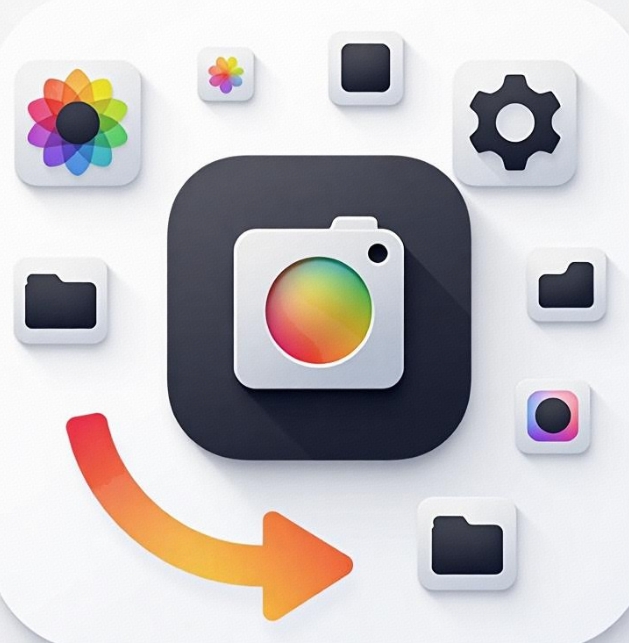Image Processing and Video Playback Features in Mini-Program Development
- latest articles
- 1.DApp Development & Customization: Merging Diverse Market Needs with User Experience 2.Analysis of the Core Technical System in DApp Project Development 3.How to achieve cross-chain interoperability in Web3 projects? 4.How does the tokenization of points reconstruct the e-commerce ecosystem? 5.How to Set and Track Data Metrics for a Points Mall? 6.What is DApp Development? Core Concepts and Technical Analysis 7.Inventory of commonly used Web3 development tools and usage tips 8.Development of a Distribution System Integrated with Social E-commerce 9.Six Key Steps for Businesses to Build a Points Mall System 10.What is DApp Development? A Comprehensive Guide from Concept to Implementation
- Popular Articles
- 1.Future Trends and Technology Predictions for APP Development in 2025 2.Analysis of the DeFi Ecosystem: How Developers Can Participate in Decentralized Finance Innovation 3.From Zero to One: How PI Mall Revolutionizes the Traditional E-commerce Model 4.DAPP Development | Best Practices for Professional Customization and Rapid Launch 5.Recommended by the Web3 developer community: the most noteworthy forums and resources 6.From Cloud Computing to Computing Power Leasing: Building a Flexible and Scalable Computing Resource Platform 7.How to Develop a Successful Douyin Mini Program: Technical Architecture and Best Practices 8.Shared Bike System APP: The Convenient Choice in the Era of Smart Travel 9.How to Create a Successful Dating App: From Needs Analysis to User Experience Design 10.From Design to Development: The Complete Process of Bringing an APP Idea to Life
With the widespread adoption of smartphones and technological advancements, mini-programs, as a lightweight application form, have gradually gained extensive application across various fields. Due to their characteristics of no need for download and installation, and instant use, mini-programs have garnered high attention from both developers and users. The mini-program ecosystems of platforms like WeChat, Alipay, and Baidu are continuously expanding, providing developers with richer development tools and interfaces.
In the development process of mini-programs, image processing and video playback functionalities are very important components. Image processing involves the display, editing, cropping, filtering, and other manipulations of images; while video playback functionality is crucial for users to watch short videos, live streams, or other types of video content within mini-programs. Efficiently implementing these functionalities not only affects the user experience but also impacts the performance and stability of the mini-program.
This article will provide a detailed discussion on the implementation methods, technical challenges, and optimization strategies for image processing and video playback, helping developers better master these core technologies and enhance the functionality and experience of mini-programs.
I. Image Processing Functionality in Mini-Programs
1. Basic Requirements for Image Processing
In mini-programs, the requirements for image processing can be broadly categorized into the following types:
Image Display: This is the most basic requirement; almost all mini-programs need to display images uploaded by users or obtained from the internet.
Image Editing: Some mini-programs need to provide editing functions for images, such as cropping, rotating, adjusting brightness, contrast, etc.
Filter Effects: Mini-programs related to social platforms and photography applications often provide various filters and special effects, allowing users to easily beautify images.
Image Recognition: For example, using image recognition technology to identify objects, text, or faces in photos.
For these requirements, developers typically use the image APIs provided by mini-programs or integrate third-party services to achieve complex image processing functionalities.
2. Technical Implementation of Image Processing in Mini-Programs
Mini-programs provide rich image processing interfaces, allowing developers to implement some basic image operations. Taking WeChat mini-programs as an example, common image processing interfaces include:
canvas: The Canvas component in WeChat mini-programs can be used for more complex image processing operations. Developers can draw images on the Canvas to achieve functions like cropping, rotating, and adding filters.
image component: This component is used to display images and supports scaling and cropping of images. It is typically used for displaying static images.
wx.chooseImage(): This is an interface provided by WeChat mini-programs for selecting image files from the user's device. Users can upload images through this interface, and developers can perform subsequent processing on the images as needed.
For example, when cropping an image is needed, developers can perform the following operations via Canvas:
javascript copy editconst ctx = wx.createCanvasContext('myCanvas');
ctx.drawImage(imagePath, 0, 0, width, height);
ctx.clip();
ctx.draw();
This code obtains a Canvas context via the createCanvasContext method, the drawImage method is used to draw the image, and the clip method is used for cropping.
In addition to simple image processing, for implementing filter effects, one can utilize Canvas color operations or directly call some third-party image processing libraries. For example, using libraries like Pixi.js can achieve complex image effects and filters.
3. Optimization of Image Processing
Image processing, especially on mobile devices, often requires attention to performance optimization. Improper handling can lead to page lag or slow loading, thereby affecting the user experience.
Common optimization strategies include:
Image Compression: For uploaded or displayed images, developers can use compression algorithms to reduce image size and decrease bandwidth consumption.
Asynchronous Processing: During image processing, heavy computations should be avoided on the main thread; use asynchronous tasks or technologies like Web Workers to share the computational load.
Image Caching: For images that need to be loaded frequently, utilize caching mechanisms to speed up loading times and avoid reloading the same images repeatedly.
II. Video Playback Functionality in Mini-Programs
1. Basic Requirements for Video Playback
Video playback functionality plays an important role in many mini-programs. Videos can be short videos, live streams, educational videos, news videos, etc. Watching video content through mini-programs has become a daily activity for users, especially in social and e-commerce fields, where video playback is extremely common.
The basic requirements for video playback include:
Play Local Videos: Videos uploaded by users or stored locally.
Play Network Videos: Load and play videos stored on the network via URLs.
Video Control Functions: Including operations like play, pause, volume adjustment, progress bar control, full screen, etc.
Live Streaming Functionality: Live video playback requires real-time rendering and stream processing.
To implement these functions, developers typically use the tag provided by mini-programs or control video playback through lower-level APIs.
2. Technical Implementation of Video Playback in Mini-Programs
WeChat mini-programs provide a very powerful tag to support video playback functionality. This tag can be directly used to embed video files and supports multiple configuration options.
By setting the controls property, developers can provide functions like play, pause, and volume adjustment. The tag supports common attributes including:
src: The address of the video resource, which can be a local file or a network video URL.
controls: Whether to display the video control bar.
autoplay: Whether to autoplay.
loop: Whether to loop playback.
muted: Whether to mute.
For more complex control requirements, such as custom play buttons, progress bars, etc., the mini-program's component can be used in conjunction with JavaScript for operations. Developers can use APIs to get the video playback status, progress, and control the playback behavior.
3. Optimization of Video Playback
Video playback is a functionality with high performance requirements, especially on mobile devices, where smooth video playback can be affected by factors like bandwidth and device performance. Therefore, optimization of video playback functionality is equally crucial.
Common optimization strategies include:
Video Preloading: To reduce video loading time, the
tag'spreloadproperty can be used to preload videos.Adaptive Resolution: Dynamically adjust the video resolution based on the user's network environment and device performance to provide the best viewing experience.
Caching Mechanism: Reduce the time spent repeatedly loading the same video through video caching.
III. Combined Applications of Image Processing and Video Playback
In actual development, image processing and video playback are often closely integrated. For example, some mini-programs allow users to insert images, effects into videos, or let users take screenshots of videos. In such cases, developers not only need to implement image processing functions but also ensure the smoothness of video playback.
For instance, developers can allow users to capture video frames during playback and process the captured images, or even combine images and video content to form new short videos. Such applications are common in video editing, short video platforms, and live streaming applications.
Conclusion
As a lightweight application form, mini-programs have become a part of daily life. Image processing and video playback, as two important functionalities in mini-program development, greatly enrich the user's interactive experience. By reasonably utilizing the APIs and related technologies of mini-programs, developers can provide a better user experience when implementing these functions, enhancing the performance and stability of the mini-program.
With the continuous development of technology, the implementation methods for image processing and video playback functionalities are also constantly innovating. Developers should keep up with technological trends, continuously optimize and enhance these functionalities to meet the growing demands of users.
-

How to Increase User Stickiness and Activity Through Mini Program Development
With the development of the internet and mobile internet, mini-programs, as an e···
-

How can mini-program development assist in corporate marketing and e-commerce transformation?
In today's rapidly evolving mobile internet landscape, corporate marketing and e···
-

Offline Functionality Design and Data Synchronization in Mini-Program Development
With the rapid development of mobile internet, mini-programs, as a lightweight a···

 Blockchain
Blockchain












